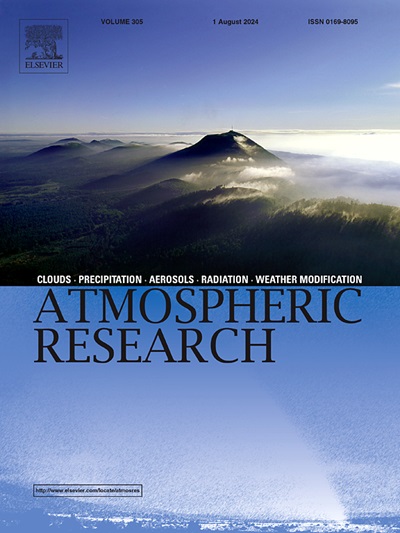Comparison of extreme heatwaves in Southern China in August 2022 and 2024
IF 4.5
2区 地球科学
Q1 METEOROLOGY & ATMOSPHERIC SCIENCES
引用次数: 0
Abstract
In August 2022 and 2024, Southern China experienced unprecedented heatwaves. Using ERA5 reanalysis data, we conducted a comparative analysis of the similarities and differences between these two extreme heatwaves. Our findings reveal that while the 2024 heatwave was less intense than the one in 2022, it was more concentrated in late August, unlike the prolonged heatwave in 2022, which spanned the entire month. Despite these variations in intensity and duration, both heatwaves were driven by a common atmospheric mechanism: anomalous easterly winds resulted in subsidence and significant temperature anomalies across Southern China. These easterly winds were closely associated with an anticyclone anomaly over the region, influenced by an upstream wave train from Europe. Crucially, warm sea surface temperature (SST) anomalies in the Barents Sea played a vital role in sustaining and forming this wave train. To further validate this mechanism, we conducted a regression analysis using historical data from 1979 to 2024, confirming its broad applicability in explaining heatwaves in Southern China, including those of shorter durations like the 2024 event. This study significantly advances our understanding of heatwave dynamics in Southern China and offers novel insights that can improve future predictive capabilities.
2022年8月和2024年8月中国南方极端热浪的比较
2022年8月和2024年8月,中国南方经历了前所未有的热浪。利用ERA5再分析数据,对比分析了这两次极端热浪的异同。我们的研究结果表明,尽管2024年的热浪没有2022年那么强烈,但它更集中在8月下旬,而不像2022年的热浪持续了整个月。尽管在强度和持续时间上存在这些差异,但这两次热浪都是由一个共同的大气机制驱动的:异常的东风导致了华南地区的沉降和显著的温度异常。这些东风与该地区的反气旋异常密切相关,受到来自欧洲的上游波列的影响。至关重要的是,巴伦支海温暖的海表温度(SST)异常在维持和形成这一波列中发挥了至关重要的作用。为了进一步验证这一机制,我们利用1979年至2024年的历史数据进行了回归分析,证实了其在解释中国南方热浪(包括像2024年事件那样持续时间较短的热浪)方面的广泛适用性。这项研究极大地促进了我们对中国南方热浪动力学的理解,并提供了新的见解,可以提高未来的预测能力。
本文章由计算机程序翻译,如有差异,请以英文原文为准。
求助全文
约1分钟内获得全文
求助全文
来源期刊

Atmospheric Research
地学-气象与大气科学
CiteScore
9.40
自引率
10.90%
发文量
460
审稿时长
47 days
期刊介绍:
The journal publishes scientific papers (research papers, review articles, letters and notes) dealing with the part of the atmosphere where meteorological events occur. Attention is given to all processes extending from the earth surface to the tropopause, but special emphasis continues to be devoted to the physics of clouds, mesoscale meteorology and air pollution, i.e. atmospheric aerosols; microphysical processes; cloud dynamics and thermodynamics; numerical simulation, climatology, climate change and weather modification.
 求助内容:
求助内容: 应助结果提醒方式:
应助结果提醒方式:


